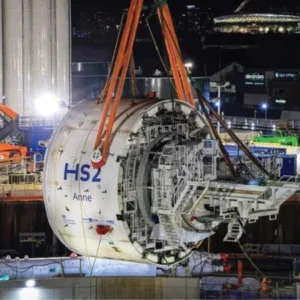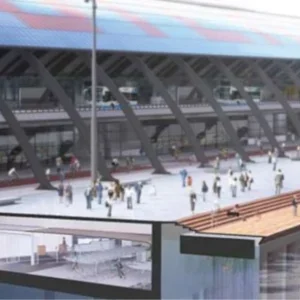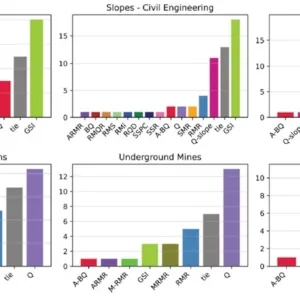Last year a jv of Dibco-CRS completed a 550m-long microtunnel drive under Pearson airport in mixed-face conditions of native soils overlying completely weathered shale bedrock.
Walter Trisi, CRS general manager and vice president, says prior the last five years microtunnelling through shale would not have been considered. “Normally in the shale locally that would have been a rib and bore tunnel.”
Microtunnelling is now widely used in Ontario for municipal projects, although it was not nearly as prevalent five years ago. Due to an influx of knowledge among contractors and advanced technologies, the microtunnelling industry has not only developed a strong presence but also transformed into a leader in North America.
From longer lengths of microtunnel drives, to larger diameter and curves, challenging drives are more of the norm here, Trisi says.
“Even in the US they don’t really do that many microtunnels with curves.” He notes companies have done it. “But it’s more prevalent here where we’ve done longer drives, and microtunnel projects in any kind of geologic formations—soft, silty soils and in shale.”
The Centre of Advancement for Trenchless Technology (CATT) hosts a one-day workshop each year with a focus on the construction of municipal pipelines using microtunnelling. Mark Knight, director of CATT, says the workshop’s target audience is municipal engineers and consultants.
“The main goal is to make sure we are doing projects that are going to be successful, and making sure that they’re aware of what needs to be done—design procedures, construction, design limitations, etc.,” he explains.
REINTRODUCTION
Microtunnelling is not necessarily new to Ontario. Knight recalls projects in the late ‘90s and early 2000s, which ran into difficulties. “Partly because of the soil and the ground conditions,” he says. “There were a lot of glacial till, boulders and cobbles. Those created challenges for microtunnelling projects.”
On top of that, he adds, Iseki and others went out of the microtunnelling market. That is until the early teens when contractor Ward & Burke entered the Canadian market. “They basically brought over a machine from Ireland to use at the Toronto Airport and they started marketing a microtunnelling component, and within a year they had probably four-five different projects.”
Significantly, in 2012-2013, Ward & Burke, as a subcontractor to McNally, completed two curved microtunnel drives in Keswick, Ontario. Not only was this the first trenchless project in Canada to use designed microtunnel curves along its alignment, it also involved the “wet” retrieval of the MTBM from the bed of Lake Simcoe, another first in Canada.
Other contractors now actively microtunnelling in Ontario include CRS and Earth Boring Company Limited.
OBSTACLES
CATT’s focus is the small diameter market, specifically for municipal water and sewer, with an aim to grow the industry and help ensure projects are done successfully. A significant part of its programming is education and training.
One of the biggest barriers for trenchless technology, according to surveys by CATT, has been a lack of knowledge on the consulting and engineering side of the business. In the most recent survey, from 2015, municipalities ranked cost as the biggest barrier to the use of trenchless technologies for pipeline renovation and construction. This is followed by the lack of sufficient training/knowledge; consultants lack of knowledge; and contractors’ availability.
To bridge that knowledge gap CATT offers workshops, seminars, on-site training, shortcourses and its Trenchless Road show exhibit. For example CATT hosted a microtunnelling short course for Region of Peel to train staff and consultants in preparation for one of its first microtunnels.
“We also do research in areas from infrastructure asset management to pressure pipe design, and we’ve developed a lot of software tools,” Knight adds. Another component is a graduate program that provides training for students pursuing design careers.
Marc Gelinas, trenchless lead for Hatch’s underground infrastructure group, was among the first to complete the masters program, while also taking on the role of in-house research engineer to help facilitate research into trenchless work. “I was able to get almost unprecedented access to the world of trenchless at the time,” he says. “I was able to meet a lot people who were active in the industry; a lot of contractors, manufacturers and consultants. My time at CATT put me on the ground floor of the whole trenchless movement.”
Following graduation he spent around 10 years working with a geotechnical firm in California focusing mainly on trenchless engineering work including microtunnelling. He then returned to Canada and started working with Hatch Mott MacDonald, now Hatch. “When I came back I was surprised people still did things the way they did before I left. They were still mining 2.4m diameter tunnels just to put 1.2m diameter pipes inside.” Gelinas acknowledges, “There was an initial knowledge gap, in that many owners and consultants weren’t aware that microtunnel technology was available to drive demand. In addition, because the contracting community hadn’t adopted the technology a lot of consultants were still designing things the way they had always designed them.”
However, he explains, with the entrance of Ward & Burke to the market, and the success of projects like the Keswick Outfall, the reaction of the engineering community and the degree to which the technology has since been accepted has been “unreal.” “I think we’re very lucky here in Ontario. The contractors who are working here right now—and it’s not this way everywhere— are very sharp technically and generally I think they are in the business for the right reasons. “I’ve worked in other areas where the contracting community was far more closed. They weren’t open to promoting best practices. Here, I do find that we have got a good group of contractors who are dedicated to successfully delivering projects. This is a big reason why we are seeing microtunnelling exploding. These contractors are all committed to producing quality work, pushing the technical envelope and keeping claims to a minimum.”
Forward thinking
Demand for microtunnelling and trenchless work is not likely to fall off over the next five to 10 years. That is in part because the Toronto area is still growing, but also because the region’s older infrastructure is reaching the end of its design life. The market is drawing interest from contractors outside of Ontario, including US-based companies. CRS’ Trisi says it’s not just the amount of work that’s changing in the region, but the nature of it as well. “Because of the technology the drive lengths are getting longer, and the diameters are getting bigger. It’s kind of moving into the tunnelling market. Where we would traditionally look at a job using a TBM, now we’re looking at same job with a microtunneller.”
And Ontario isn’t the only place seeing an increase in microtunnels. Contractors are bidding on jobs in Alberta, Winnipeg and British Columbia. Trisi says microtunnelling has found its place in Canada, and not just in Ontario where contractors have not been shy to do longer microtunnel drives, larger diameters and curved drives. “Microtunnelling definitely has its place in Ontario, and actually a little bit of a strong hold now. It’s here to stay, and it’s been shown that it’s a successful method”






